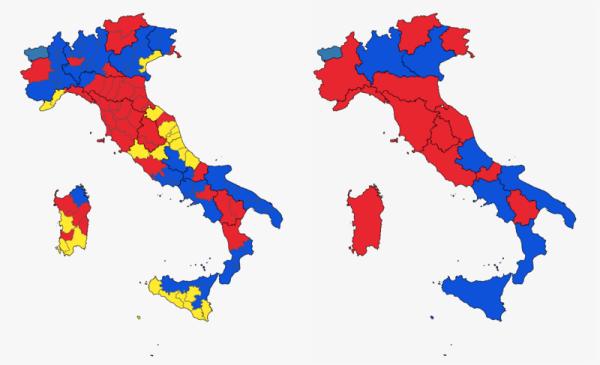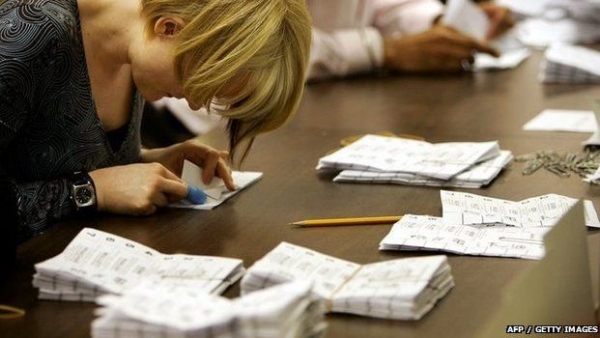E-VOTING or... digital ELECTIONS?
The latter, of course!

Back in 2013, in Italy, we had a general election. When the polling booths closed, I had no idea of what the results would be, but I also had something else: no haste at all to know the real, definitive results in the next two or three hours. Yes, of course I was curious. But I didn’t expect anybody to care about it, and I did not want anybody to care..
Having the final, official results within one hour would have been nice. But nothing more. But if the only means to have that had been e-voting, with or without paper trail, I would have answered as I still answer today: Thanks, but NO, thanks.
This post, which is also about other “voting procedures”, was born as a reaction to two things I read that same evening.
One was that those elections would cost almost 400 million euros. In my opinion, however, even if it would not justify the use of voting machines anyway, the overall cost was much higher, for reasons perfectly summarized by this state I accidentally discovered on Facebook (emphasis mine):
“Our small municipality collects and controls the electoral data of 17 sections with a software procedure. Then we must print and fax the data to the Prefecture, where they reload them (in some other software, I guess) and check again the result. Couldn’t we just use one single software with a Web interface, thus going much faster, with much less human errors? It would take so little to get this done… Just somebody’s political will”
Computers as typewriters, oh my!
That evening, reading those two “news” did not leave my objections to e-voting unaltered. It reinforced them.
Because what I read means that in Italy we may have definitive electoral results much faster than we have, without giving up the much higher security and democracy that only copy pencils, paper-only ballots and manual vote counting can provide.

How we still use computers
</em></u>
Using computers only as if they were turbocharged typewriters, to print paper and ship it to people who will just have to read and manually copy its content again is pure nonsense.
In this case, even if there are no errors, how much time is wasted among the various public offices between the booths and the Ministry of Interior Ministry to just reinsert and recheck numbers? What is the cost?
Would it not make just a tiny bit more sense if, immediately after finishing good old manual counting, the presidents of each seat inserted the results directly into the Ministry’s servers with a normal Web form? You know, one of those things that any computer science student can put up two hours with Open Source libraries these days?
What if, after counting PAPER ballots by HAND…

<u><em><strong>CAPTION:</strong>
<a href="https://www.peopledemandingaction.org/privacy-policy/item/454-hand-counting-paper-ballots-is-not-impossible" target="_blank">Are you sure that the bottleneck is manual COUNTING?</a>
</em></u>
- the president of each polling station authenticated themselves with the same procedures already widely used for home banking (access only to the page of their own seat, with hardware key that generates “disposable” codes)
- what if they did it right away, in the presence of all the other staff and representatives of political parties that are already there anyway, EXACTLY to make sure there is no fraud
- what if everyone immediately signed the printable version of that form
- what if the raw numbers were immediately accessible from the Web to whoever wanted to read them
What if Italy (or any other country, of course) digitized not voting and counting, but the transmission of the results in this way? Would the risk of frauds increase, or the opposite?
Electronic voting is one thing, digitizing the transmission of results is another. The first thing is way riskier, but luckily also totally unnecessary to do the second.
That’s the problem. Money. Too little of it
Perhaps the main flaw of such a procedure is that it costs too little, and that it would eliminate pharaonic tenders for voting machines and all the related infrastructure, certifications and upgrades.
Oh, and it would also reduce personnel costs. Not to mention the value of commercials inside the endless post-vote talk shows.
Sometimes the REAL digital innovation is the one that seems less digital and advanced than others.
(this post is a revised translation of the one I wrote in Italian here, in 2013)
Image sources:
Who writes this, why, and how to help
I am Marco Fioretti, tech writer and aspiring polymath doing human-digital research and popularization.
I do it because YOUR civil rights and the quality of YOUR life depend every year more on how software is used AROUND you.
To this end, I have already shared more than a million words on this blog, without any paywall or user tracking, and am sharing the next million through a newsletter, also without any paywall.
The more direct support I get, the more I can continue to inform for free parents, teachers, decision makers, and everybody else who should know more stuff like this. You can support me with paid subscriptions to my newsletter, donations via PayPal (mfioretti@nexaima.net) or LiberaPay, or in any of the other ways listed here.THANKS for your support!